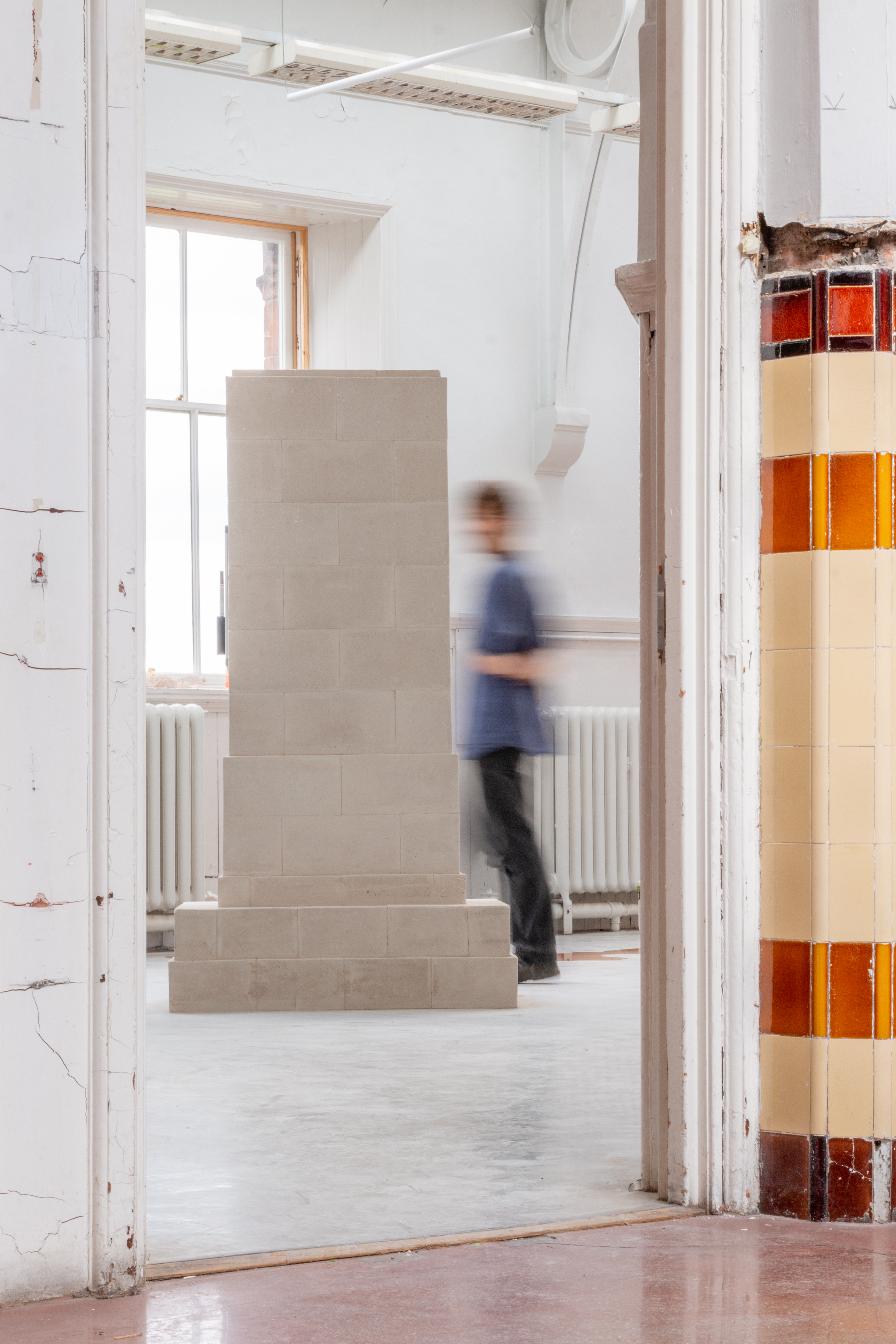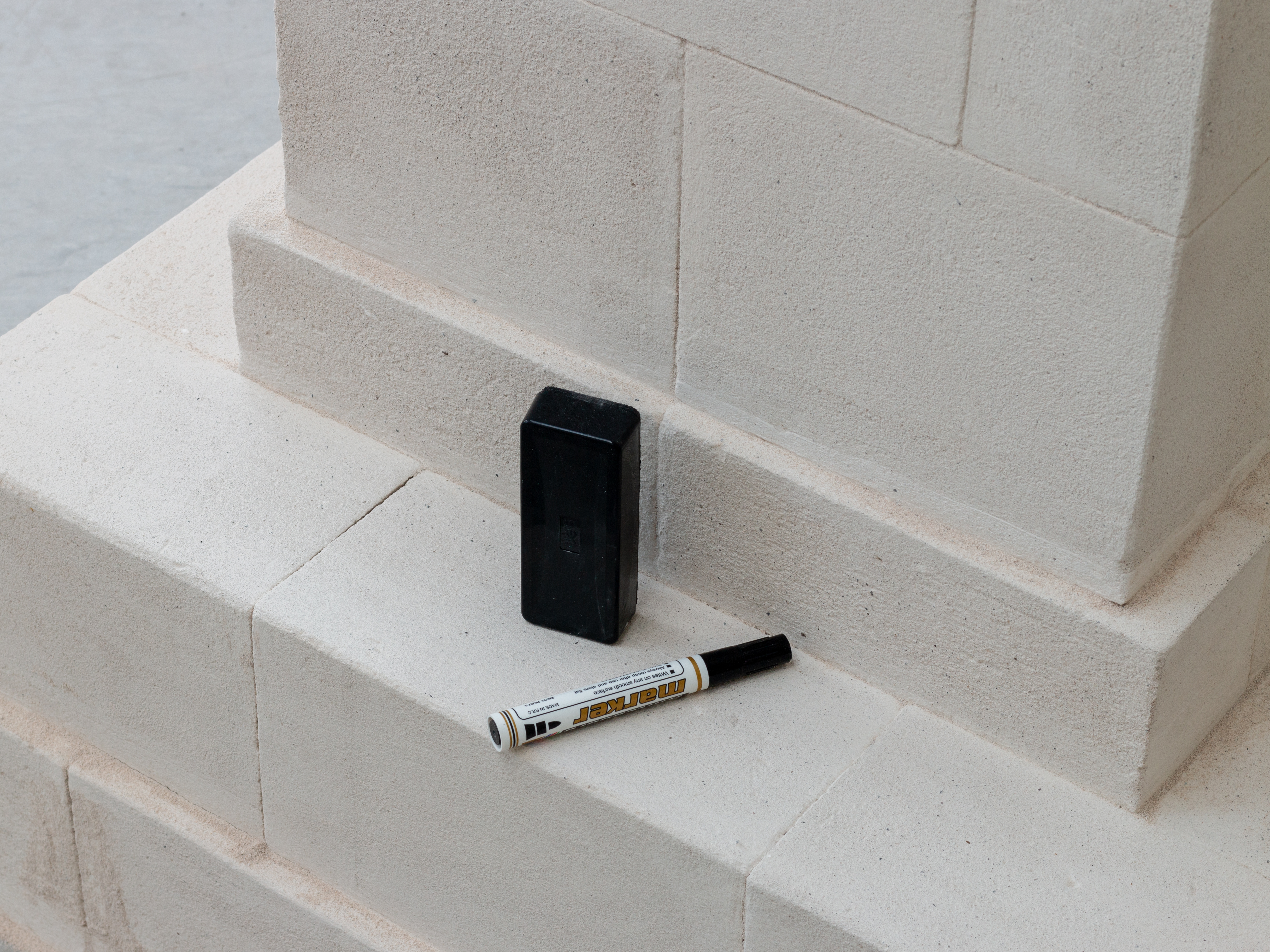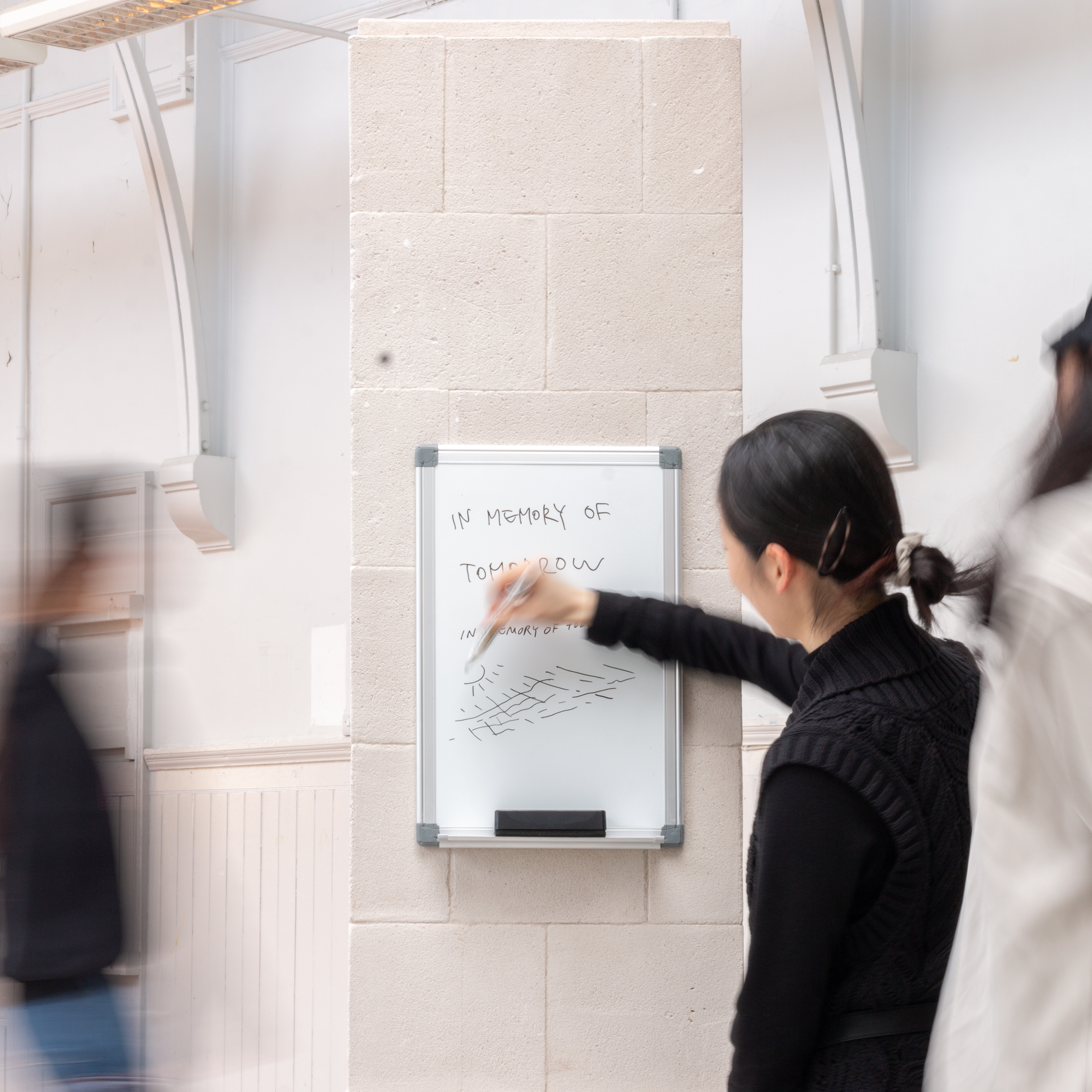How to make a new monument (2023)
Building sand, plaster, wood, whiteboard, marker, eraser109 x 81 x 204 cm
Memorials are created to remember, to commemorate different matters events and people. They provide visual evidence of the existence of a particular subject, such as monuments, statues, signs, and other artefacts. When we look at history, any single event must be understood in its historical context.
However, monuments built and seated in physical space end up in a situation that is irrelevant or contrary to the meaning of their construction. Although most monuments are accompanied by textual descriptions, their symbolism and purpose of praise are not interpreted in the same way by future generations.
However, monuments built and seated in physical space end up in a situation that is irrelevant or contrary to the meaning of their construction. Although most monuments are accompanied by textual descriptions, their symbolism and purpose of praise are not interpreted in the same way by future generations.

How to awaken forgotten memories from monuments?
Can the meaning of a monument be revised?
Perhaps the question we should be asking is, how do we interact with monuments?
Through this ironic process, I was aiming to raise awareness of collective memory and reflexivity in society. The key to social progress and trauma recovery lies in whether people can learn and understand the impact and significance of events by facing history. History provides evidence of memory and allows one to confront the past. How to make a new monument does not intend to indicate that monuments should be preserved or abolished but to provide viewers with the method and orientation of reading historical monuments.
By sustaining a reflective interpretation, we are able to break the shackles of positions, achieve the true commemoration and reconciliation of history, and take back the responsibility of memory to ourselves.
Can the meaning of a monument be revised?
Perhaps the question we should be asking is, how do we interact with monuments?
Through this ironic process, I was aiming to raise awareness of collective memory and reflexivity in society. The key to social progress and trauma recovery lies in whether people can learn and understand the impact and significance of events by facing history. History provides evidence of memory and allows one to confront the past. How to make a new monument does not intend to indicate that monuments should be preserved or abolished but to provide viewers with the method and orientation of reading historical monuments.
By sustaining a reflective interpretation, we are able to break the shackles of positions, achieve the true commemoration and reconciliation of history, and take back the responsibility of memory to ourselves.



